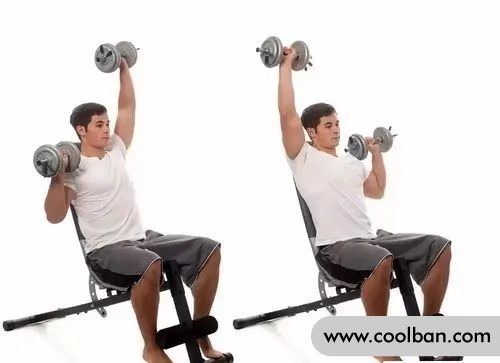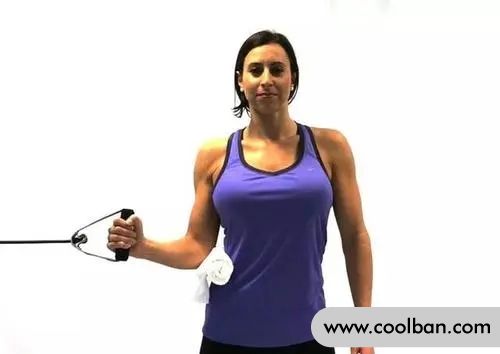What are the exercises for the shoulders?
2022-08-30
For ladies, in the shaping training process of various parts of the body, we always pay attention to a few parts, such as waist and abdomen, buttocks, legs, arms, and less attention to other parts. For example, the shoulders, but, from the perspective of the proportion of the entire upper body, although the shoulders only account for a small part, the strong and full shoulders will make your upper body more beautiful, and it will make the entire upper body line more beautiful. Arms look better, collarbones look better, shoulders become more attractive, and the entire body is taller and younger.
Therefore, in the whole body shaping process, the coordinated development of each muscle group in the whole body should be the premise, and then pay attention to the parts you like. For shoulder shaping, in order to achieve the desired effect, we must first focus on exercising the deltoid muscles. Having a certain understanding of the structure will allow us to better find a sense of strength in the training process. Structurally, the deltoid muscle consists of anterior, middle and posterior parts. The fore toes are more developed due to frequent use. The middle beam directly determines the shoulder width, and the rear is the weakest. Therefore, in the actual training process, we should make targeted arrangements according to the development characteristics of the deltoid muscles and our own training purposes.

Below is a set of deltoid exercises. In the actual training process, you can make targeted adjustments according to your training purpose. In addition, this set of movements can also be practiced at home, as long as the elastic band is used instead of the rope.
Action 1: Seated dumbbell press (target: front deltoid, middle beam)
Sit on a stool, knees apart, feet on the ground, upper body slightly leaned back, back on the mat, chest closed, arms bent, elbows open to the sides of the body, holding dumbbells in each hand, lift over shoulders, fists facing each other, shoulders sinking
Keeping your body steady, keeping your abs tight, use your deltoids to lift the dumbbells until your arms are straight, taking care not to lock your elbows and not touch both dumbbells
Stop for a moment at the highest point of the movement, contract the deltoid muscles, and then actively control the speed and slowly return to the starting state of the movement
Action 2: Standing rope pull (target: rear deltoid)
Raise the rope high, stand facing the rope and position your body, back straight, abs tightened, arms stretched forward, both hands on handles, shoulders sinking
Keeping your body steady, keeping your back straight, use the rear deltoid to pull the rope toward your face by bending your arms and elbows
The movement reaches the top and stops for a moment to effectively contract the rear deltoid, and then actively control the speed to slowly recover, feeling the stretch of the back shoulder

Action 3: Standing dumbbell lateral raise (target: middle deltoid)
Stand with feet slightly apart, knees slightly bent, upper body slightly forward, back straight, core tightened, dumbbells in both hands hanging in front of you, palms facing each other, shoulders sinking
Keeping the body steady, keeping the back straight, keeping the elbows slightly, the deltoids forcefully lift the arms sideways and upwards so that the upper arms are at shoulder height
Move to the top and stop for a while, feel the contraction of the deltoid muscle, and then actively control the speed to slowly recover, being careful not to let the arm fall freely
Action 4: Bend down and fly back with a single arm rope (target: rear deltoid)
Adjust the rope to a low position, position your body to one side of the rope, stand with your feet slightly apart, bend your hips and bend forward so your arms are almost parallel to the ground, your back is straight, your core is tight, and your inside hands are On the thigh or holding the machine, pull the other end of the rope down with the outside arm, with the elbow slightly bent
Keep the body stable, keep the back straight, keep the elbows slightly bent, the rear deltoid pulls the arms sideways and upwards, so that the upper arms reach shoulder height
Stop at the top for a moment to effectively contract the back of the shoulder, and then actively control the speed to slowly recover, so that the back of the shoulder can be effectively stretched
Action 5: Standing single-arm dumbbell front raise (target: front deltoid)
Stand with legs slightly apart, knees slightly bent, back straight, core tightened, dumbbells in both hands hanging in front of you
Keeping your body steady and core tight, use your deltoids to lift one arm forward until it's parallel to the floor.
Then the deltoid muscle on the other side drives the arm forward and lifts the arm until it is parallel to the ground, stops for a while at the top, feels the contraction of the deltoid muscle, and then actively controls the speed to slowly recover
Pay attention to keep your body stable throughout the movement, actively control the speed when falling, and don't let your arms fall freely. After one side completes the movement, switch sides to complete the other side.

Before you try it for the first time, familiarize yourself with the essentials of the movement and warm up well before starting the actual training. During the training process, know where the target muscles of each movement are, and then focus on feeling the contraction and extension of the target muscles during the training process. It may be difficult at first, but as you get used to the movements, you will naturally find the feeling. For important options, you can use light weights, and you can increase your capacity at will. Pressing movements can be performed to challenge heavy weights. 15-20 times for each movement, rest for about 45 seconds between movements, 3-5 sets each time, stretch the shoulder muscles after training to help recovery.
Therefore, in the whole body shaping process, the coordinated development of each muscle group in the whole body should be the premise, and then pay attention to the parts you like. For shoulder shaping, in order to achieve the desired effect, we must first focus on exercising the deltoid muscles. Having a certain understanding of the structure will allow us to better find a sense of strength in the training process. Structurally, the deltoid muscle consists of anterior, middle and posterior parts. The fore toes are more developed due to frequent use. The middle beam directly determines the shoulder width, and the rear is the weakest. Therefore, in the actual training process, we should make targeted arrangements according to the development characteristics of the deltoid muscles and our own training purposes.

Below is a set of deltoid exercises. In the actual training process, you can make targeted adjustments according to your training purpose. In addition, this set of movements can also be practiced at home, as long as the elastic band is used instead of the rope.
Action 1: Seated dumbbell press (target: front deltoid, middle beam)
Sit on a stool, knees apart, feet on the ground, upper body slightly leaned back, back on the mat, chest closed, arms bent, elbows open to the sides of the body, holding dumbbells in each hand, lift over shoulders, fists facing each other, shoulders sinking
Keeping your body steady, keeping your abs tight, use your deltoids to lift the dumbbells until your arms are straight, taking care not to lock your elbows and not touch both dumbbells
Stop for a moment at the highest point of the movement, contract the deltoid muscles, and then actively control the speed and slowly return to the starting state of the movement
Action 2: Standing rope pull (target: rear deltoid)
Raise the rope high, stand facing the rope and position your body, back straight, abs tightened, arms stretched forward, both hands on handles, shoulders sinking
Keeping your body steady, keeping your back straight, use the rear deltoid to pull the rope toward your face by bending your arms and elbows
The movement reaches the top and stops for a moment to effectively contract the rear deltoid, and then actively control the speed to slowly recover, feeling the stretch of the back shoulder

Action 3: Standing dumbbell lateral raise (target: middle deltoid)
Stand with feet slightly apart, knees slightly bent, upper body slightly forward, back straight, core tightened, dumbbells in both hands hanging in front of you, palms facing each other, shoulders sinking
Keeping the body steady, keeping the back straight, keeping the elbows slightly, the deltoids forcefully lift the arms sideways and upwards so that the upper arms are at shoulder height
Move to the top and stop for a while, feel the contraction of the deltoid muscle, and then actively control the speed to slowly recover, being careful not to let the arm fall freely
Action 4: Bend down and fly back with a single arm rope (target: rear deltoid)
Adjust the rope to a low position, position your body to one side of the rope, stand with your feet slightly apart, bend your hips and bend forward so your arms are almost parallel to the ground, your back is straight, your core is tight, and your inside hands are On the thigh or holding the machine, pull the other end of the rope down with the outside arm, with the elbow slightly bent
Keep the body stable, keep the back straight, keep the elbows slightly bent, the rear deltoid pulls the arms sideways and upwards, so that the upper arms reach shoulder height
Stop at the top for a moment to effectively contract the back of the shoulder, and then actively control the speed to slowly recover, so that the back of the shoulder can be effectively stretched
Action 5: Standing single-arm dumbbell front raise (target: front deltoid)
Stand with legs slightly apart, knees slightly bent, back straight, core tightened, dumbbells in both hands hanging in front of you
Keeping your body steady and core tight, use your deltoids to lift one arm forward until it's parallel to the floor.
Then the deltoid muscle on the other side drives the arm forward and lifts the arm until it is parallel to the ground, stops for a while at the top, feels the contraction of the deltoid muscle, and then actively controls the speed to slowly recover
Pay attention to keep your body stable throughout the movement, actively control the speed when falling, and don't let your arms fall freely. After one side completes the movement, switch sides to complete the other side.

Before you try it for the first time, familiarize yourself with the essentials of the movement and warm up well before starting the actual training. During the training process, know where the target muscles of each movement are, and then focus on feeling the contraction and extension of the target muscles during the training process. It may be difficult at first, but as you get used to the movements, you will naturally find the feeling. For important options, you can use light weights, and you can increase your capacity at will. Pressing movements can be performed to challenge heavy weights. 15-20 times for each movement, rest for about 45 seconds between movements, 3-5 sets each time, stretch the shoulder muscles after training to help recovery.
